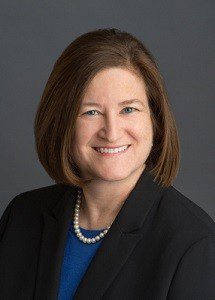 Join Together spoke with Kelly J. Clark, MD, MBA, FASAM, DFAPA, President-elect, American Society of Addiction Medicine (ASAM), about the opioid addiction medication buprenorphine.
Join Together spoke with Kelly J. Clark, MD, MBA, FASAM, DFAPA, President-elect, American Society of Addiction Medicine (ASAM), about the opioid addiction medication buprenorphine.
Under current regulations, doctors who are certified to prescribe buprenorphine (sold as Suboxone) are allowed to write prescriptions for up to 30 patients initially. After one year, they can request authorization to prescribe up to a maximum of 100 patients. The Department of Health and Human Services (HHS) has proposed doubling the current patient limit for qualified doctors who prescribe buprenorphine.
Dr. Clark spoke recently at the National Rx Drug Abuse & Heroin Summit about ways to combat buprenorphine diversion while ensuring access to good quality treatment for opioid addiction.
How big of a problem is buprenorphine diversion?
Dr. Clark: Buprenorphine is the third-most commonly prescribed opioid, and therefore it is the third-most commonly diverted opioid. It is much safer than pain pills in terms of its ability to cause lethal overdose, unless it is mixed with other substances.
The thing that causes the most buprenorphine diversion is the lack of access to buprenorphine treatment in the community. If, for example, a community had an epidemic of diabetes and an inadequate supply of insulin, there would be a black market for insulin. We are seeing the inability of people struggling with opiate addiction to get access to good treatment. In areas with the most problems with access, we see the most diversion. If people can’t get treatment through legitimate channels, they will access it through other channels.
Are there adequate policies in place to combat buprenorphine diversion?
Dr. Clark: No. We see insurance policies that are actually leading to buprenorphine diversion, such as payer policies where people get only a certain number of months of buprenorphine treatment for a lifetime disease. Or a payer may require a tapering of the dose, which we don’t do for other chronic diseases. We are trying to manage this chronic disease, not taper patients off treatment. We want them to be less likely to die of opiate addiction and to be able to function in society. That’s the point of the medication.
Why are some doctors who are authorized to prescribe buprenorphine not doing so?
Dr. Clark: There are a number of reasons doctors don’t prescribe buprenorphine even if they can. Some got a waiver to prescribe it as part of their residency training, but didn’t plan to use it. Some get a waiver in order to maintain one or two patients they already have in their practice, but aren’t planning on expanding to other patients. Some get a waiver so they can cover colleagues on vacation, but don’t want their own buprenorphine patients.
Often doctors find caring for a larger number of patients with buprenorphine requires a larger infrastructure than they have. If you have 100 patients on buprenorphine who come in monthly, that’s a lot of visits, keeping track of pill counts and call-backs. Sometimes doctors or their colleagues don’t want to do that much work. Doctors prescribing buprenorphine also have to deal with audits from the Drug Enforcement Administration, even if they are not currently prescribing it to any patients.
Is the current limit of 100 patients per qualified doctor appropriate?
Dr. Clark: No. Buprenorphine is an evidence-based treatment for an epidemic disease state, yet it is the only medicine that has a patient cap. As a psychiatrist, I don’t have a limit on how many patients I can treat with antipsychotic drugs for schizophrenia, yet it is no more difficult to treat patients with buprenorphine than with antipsychotic drugs.
The HHS plan to double patient slots is a good start, but it is not at a level that we believe is adequate to address the nature of this epidemic. ASAM has proposed lifting the cap in a graduated way to 500 patients per addiction specialist.
We understand that diversion is a concern, which is why ASAM would support, where needed, giving HHS oversight of practices with a large number of buprenorphine patients. They already do this with methadone clinics.
What kind of diversion control protocols would be effective?
Dr. Clark: We need more effective training for doctors. Currently doctors receive only eight hours of training before being allowed to prescribe buprenorphine.
ASAM has guidelines for treating addiction, which explain what good addiction treatment with buprenorphine should look like. It’s really important that we identify what good buprenorphine practices look like and improve access to them, and identify what bad practices look like and put those doctors out of business, or educate them and help them give patients the right kind of care.
Patients should have a medical exam and blood work to check for liver problems. They should be seen often—even weekly early in treatment, and seen less frequently only when the doctor determines they are doing well.
Doctors should call patients in to count the amount of buprenorphine they have left, and perform random drug tests to check for metabolites of buprenorphine to make sure they come from the person taking the drug.
ASAM is looking forward to injectable and implantable buprenorphine within the next few years, which will also help with the diversion issue.
Published
April 2016
 Get Support
Get Support
